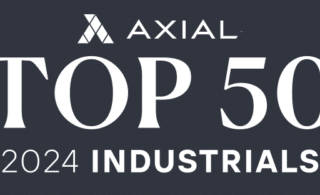
The 6th annual Midwest M&A/Private Equity Forum sponsored by the Thomson Reuters Institute was held in early December in Columbus, Ohio, and for your humble correspondent, this was not only my second time as one of the participants, but my first time as a moderator of a panel! More on that later.
The State of the M&A Market kicked off the 9 am start, and since the expert panel included insurance industry representatives, the discussion began with a deep dive into the exciting world of rep & warranty insurance. If you follow the M&A market, you undoubtedly know the premiums for those products are much lower than in years past, so much so that small deals, defined as roughly $10 million to $20 million in value, can now consider buying rep & warranty insurance coverage. While the speakers wisely avoided granular detail, they did say that premiums might be in the range of about $150K to $200K for what they styled “smaller deals.”
After that exhilarating discussion, the conversation segued, much to the delight of the audience, to technology. The panelists used a quaint Midwest colloquialism to state that technology “rules the roost for deals.” In particular, companies in the logistics space likely will enjoy an enhancer to valuation if they utilize cutting edge technology. Specifically, knowing the location of an item at any time is a distinct competitive advantage.
The so-called M&A boom of ’21 and ’22 is now officially over—at least per the discussion of the panelists. Nevertheless, owners are still holding out for what they perceive as the higher valuations of the previous few years. Despite higher interest rates, private equity firms are still competitive with strategic acquirers, so much so that PE firms are increasingly focused on specialization as a means to differentiate themselves from other buyers. The funds have a surfeit of capital— “lots of dry powder,” to use another Midwestern expression—and the pressure from their limited partners to deploy the capital, or return it, has fueled their willingness to submit strong bids. Valuation multiples therefore remain high, and as a consequence, structuring is now a de facto part of deals. Be ready to see more seller notes, earnouts, and anything that can delay payments, in the future.
The focus of this conversation tended to be on the demand from buyers, as opposed to the supply from sellers. If M&A activity is slower now, in the opinion of the author, the reason is because of a lack of sellers, not slack demand from acquirers. If a business owner does not want to sell, then buyers have limited recourse to buy companies. This helps explain why private equity remains active even in a higher interest rate environment.
Among other topics discussed at the meeting, non-compete agreements are losing their luster, as Delaware courts are invalidating them. The old saw of “you can’t prevent someone from earning a living” seems to be the driving force, especially when the signatory is an employee and not a beneficial owner. Speaking of beneficial owners, the Corporate Transparency Act was discussed. Beginning on January 1, 2024, information on the beneficial owners of companies will be collected by FinCEN, the Treasury Department’s Financial Crimes Enforcement Network. While promises abound that the information collected will not be made public, that will last until someone hacks into the system or a disgruntled employee leaks information.
In terms of distressed M&A, the lower interest rate environment of the last decade-plus has likely caused problems, because as rates go up, weak companies that are over-leveraged are exposed. Still, the root cause of distressed companies is often self-inflicted, namely they do not have the right person (or team) in place to make decisions and execute mandates.
The human resource portion of the meeting was handled right after lunch, because nothing stimulates vibrant conversation and audience participation more than an HR discussion right after a large meal. One of the main discussion points was the recent trend to work from home instead of going to an office. While productivity for some can be increased through the elimination of a daily commute, the “water cooler” discussions that are part of an office are now missing. In the future, we’ll likely see more of a hybrid approach, where the work week is conducted both at home and in an office.
Hot button topics of diversity, equity, and inclusion (DEI) and environment, social, and corporate governance (ESG) were also discussed, and while these topics are in the news right now, the recent Supreme Court ruling that invalidated affirmative action programs will likely have a cooling effect on DEI and ESG initiatives.
While we cannot know what will unfold in the new year, the feeling from the discussions is M&A will continue to adapt to changes. Accounting rules and tax laws may change, insurance products may come and go, social trends might flare then expire, interest rates might fluctuate, but as long as good companies with owners who have reasonable expectations come to market, buyers will continue to demand acquisitions.
William R. (“Bill”) Snow, a FOCUS Managing Director, is an experienced M&A professional with over 30 years of professional experience, including almost two decades as an investment banker. His work includes business sales and capital raises for middle-market companies as well as buy-side services for acquirers seeking middle-market companies. Mr. Snow’s clients have included water works manufacturers and value-added distributors as well as firms focusing on packaging, medical supplies and equipment, automotive parts, drink dispensing equipment, security, apparel, refined fuels, and more. Contact Bill at [email protected].












